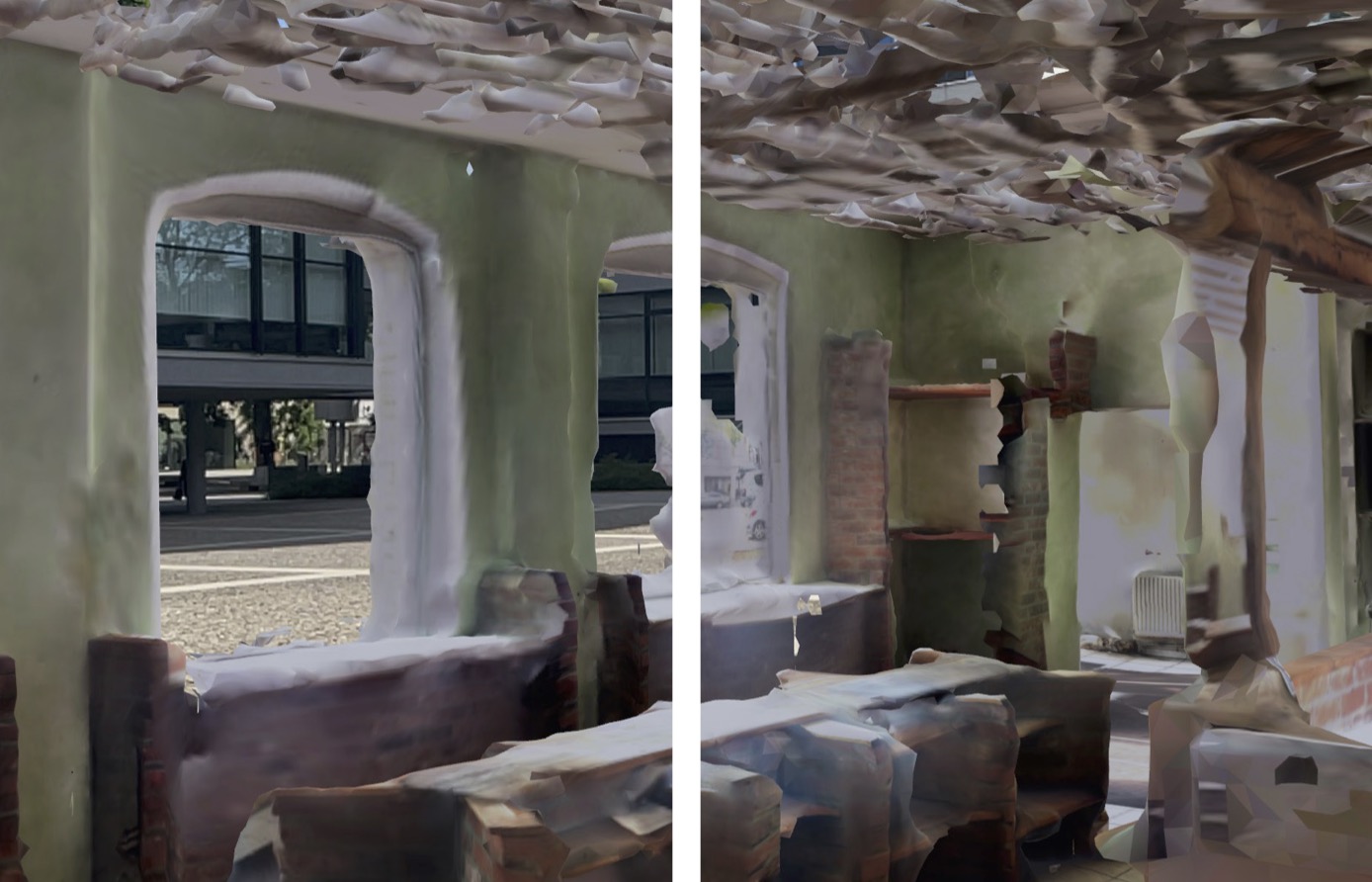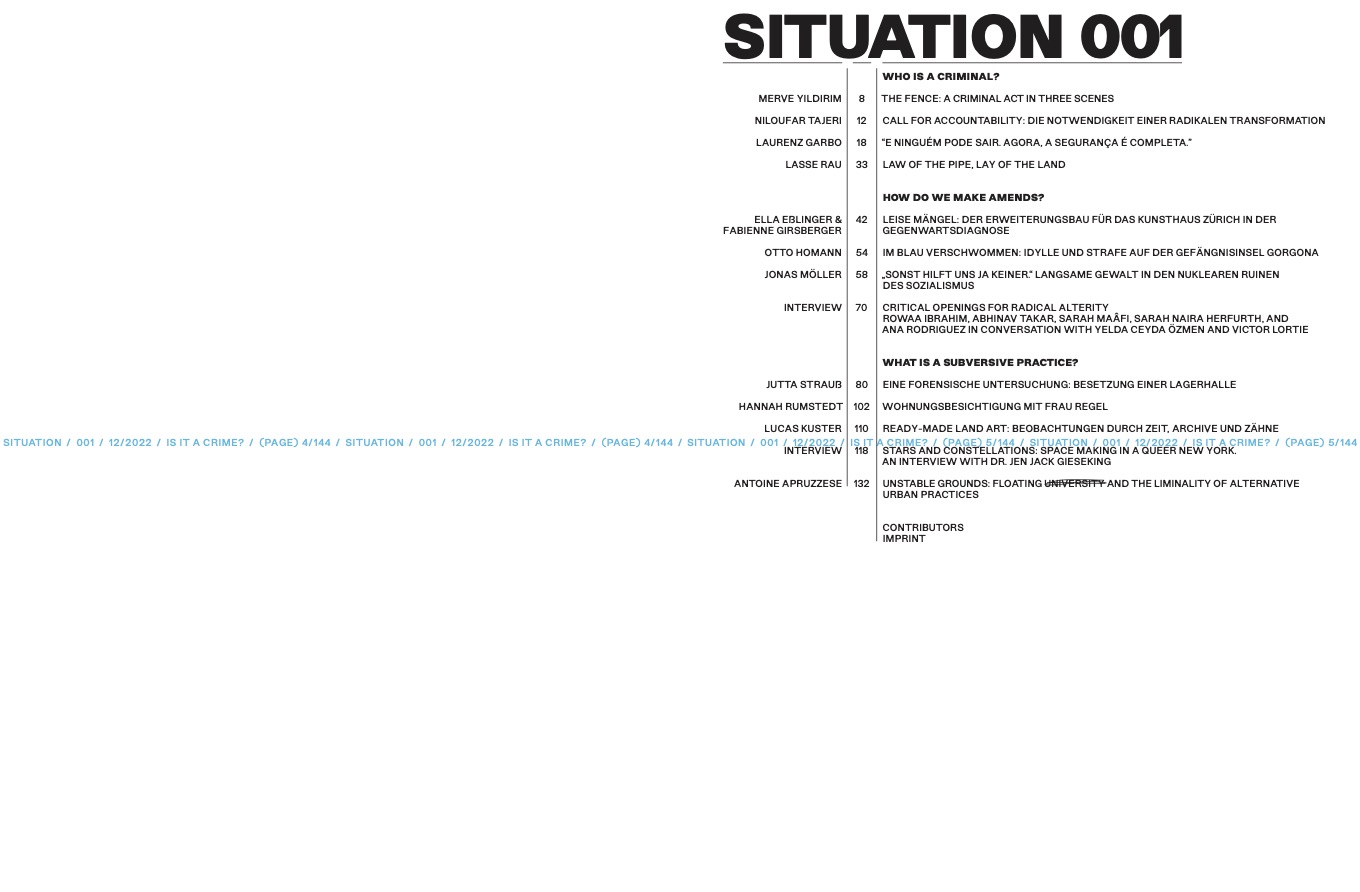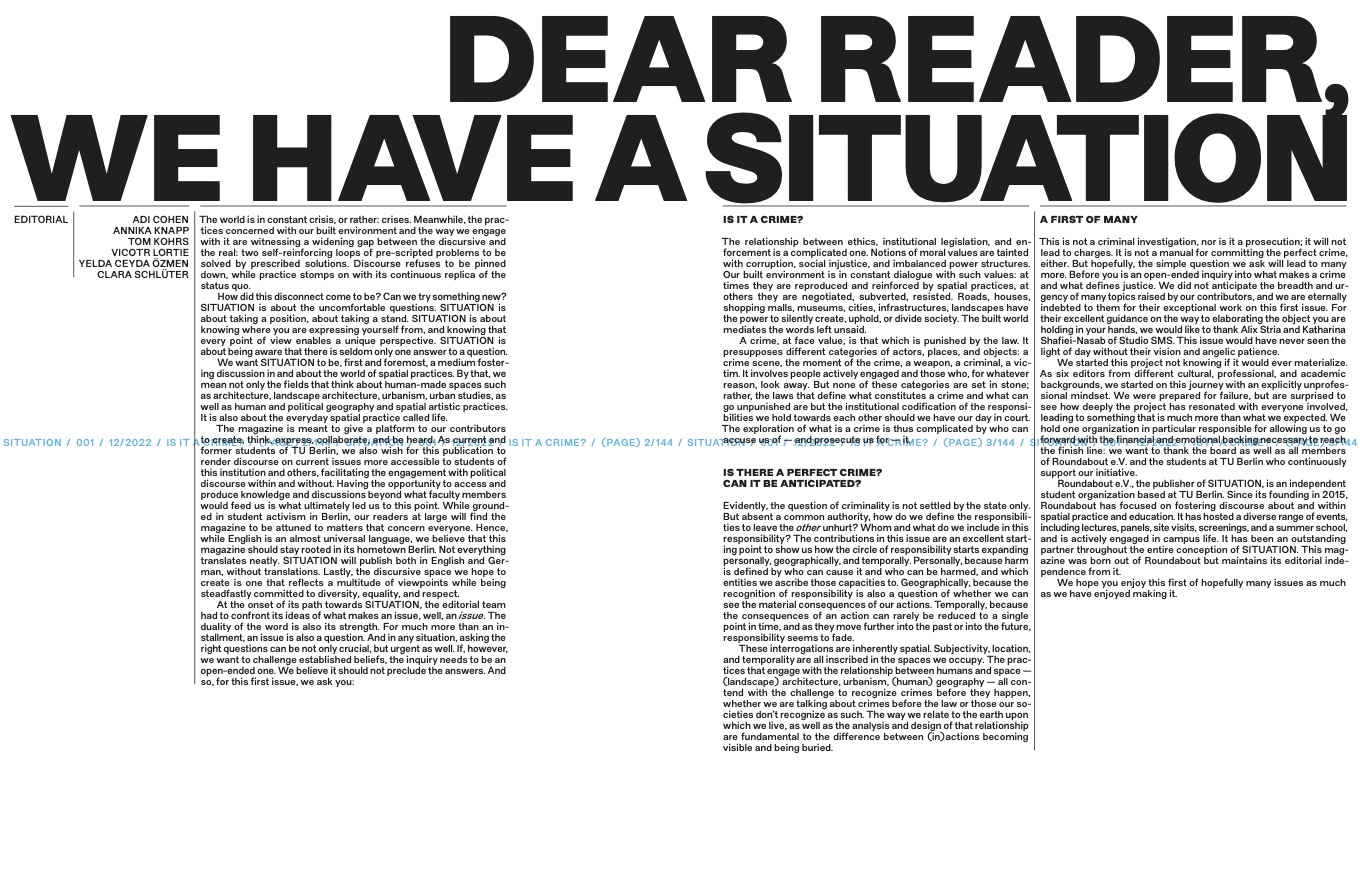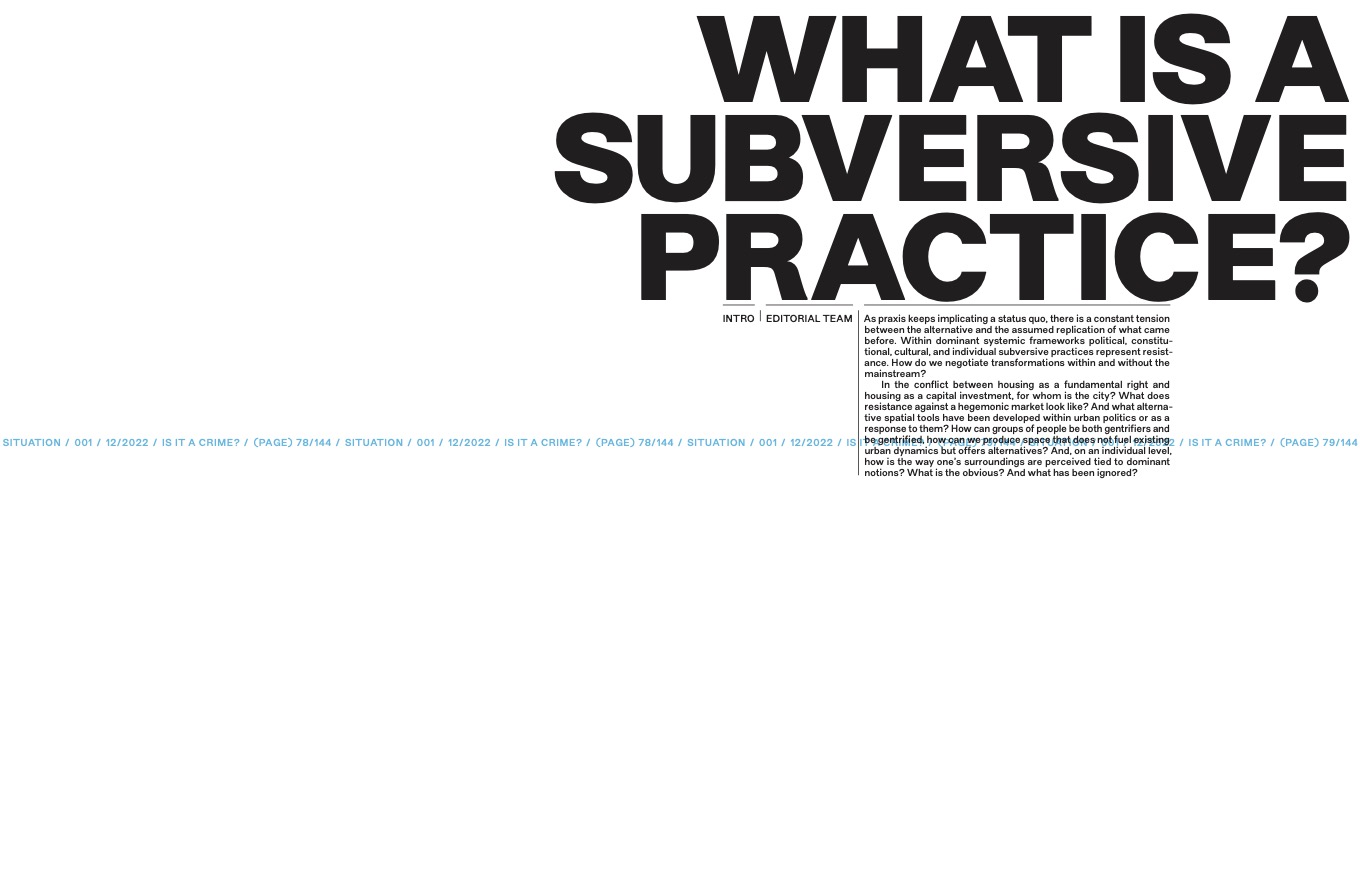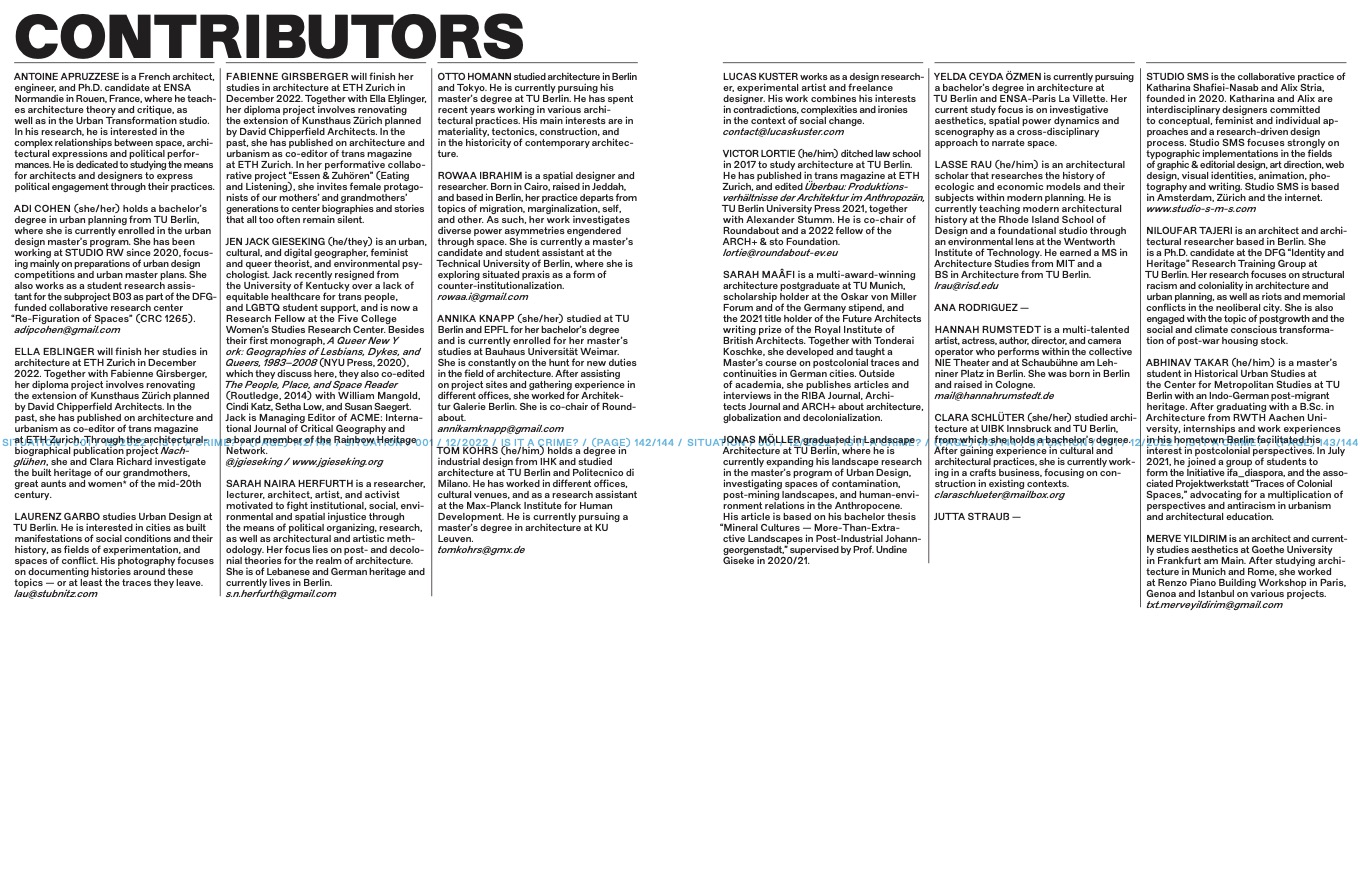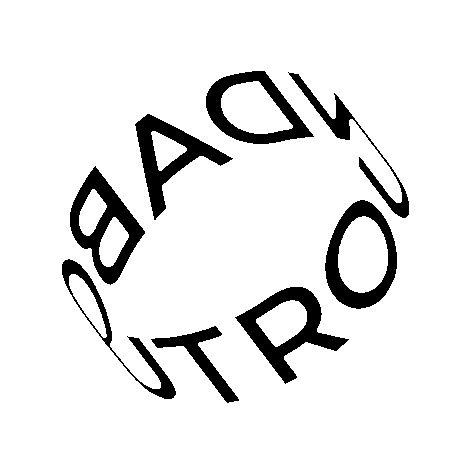001 IS IT A CRIME?
Authors/
Abhinav Thakar, Ana Rodriguez, Antoine Apruzzese, Ella Eßlinger, Fabienne Girsberger, Hannah Rumstedt, Jen Jack Gieseking, Jonas Möller, Jutta Strauß, Lasse Rau, Laurenz Garbo, Lucas Kuster, Merve Yildirim, Niloufar Tajeri, Otto Homann, Rowaa Ibrahim, Sarah Maafi, Sarah Naira Herfurth
Editors/
Adi Cohen, Annika Knapp, Clara Schlüter, Tom Kohrs, Victor Lortie, Yelda Ceyda Özmen
Graphic Design/
Studio SMS (Katharina Shafiei-Nasab & Alix Stria)
Typeface/
New Edge by Charlotte Rohde
Print/
Sportflieger
Published/
12/2022 by Roundabout e.V
Price/
10€ Students
15€ Regular
Authors/
Abhinav Thakar, Ana Rodriguez, Antoine Apruzzese, Ella Eßlinger, Fabienne Girsberger, Hannah Rumstedt, Jen Jack Gieseking, Jonas Möller, Jutta Strauß, Lasse Rau, Laurenz Garbo, Lucas Kuster, Merve Yildirim, Niloufar Tajeri, Otto Homann, Rowaa Ibrahim, Sarah Maafi, Sarah Naira Herfurth
Editors/
Adi Cohen, Annika Knapp, Clara Schlüter, Tom Kohrs, Victor Lortie, Yelda Ceyda Özmen
Graphic Design/
Studio SMS (Katharina Shafiei-Nasab & Alix Stria)
Typeface/
New Edge by Charlotte Rohde
Print/
Sportflieger
Published/
12/2022 by Roundabout e.V
Price/
10€ Students
15€ Regular
The relationship between ethics, institutional legislation, and enforcement is a complicated one. Notions of moral values are tainted with corruption, social injustice, and imbalanced power structures. Our built environment is in constant dialogue with such values: at times they are reproduced and reinforced by spatial practices, at others they are negotiated, subverted, resisted. Roads, houses, shopping malls, museums, cities, infrastructures, landscapes have the power to silently create, uphold, or divide society. The built world mediates the words left unsaid.
A crime, at face value, is that which is punished by the law. It presupposes different categories of actors, places, and objects: a crime scene, the moment of the crime, a weapon, a criminal, a victim. It involves people actively engaged and those who, for whatever reason, look away. But none of these categories are set in stone; rather, the laws that define what constitutes a crime and what can go unpunished are but the institutional codification of the responsibilities we hold towards each other should we have our day in court. The exploration of what is a crime is thus complicated by who can accuse us of - and prosecuses us - for it.
Evidently, the question of criminality is not settled by the state only. But absent a common authority, how do we define the responsibilities to leave the other unhurt? Whom and what do we include in this responsibility?The contributions in this issue are an excellent starting point to show us how the circle of responsibility starts expanding personally, geographically, and temporally. Personally, because harm is defined by who can cause it and who can be harmed, and which entities we ascribe those capacities to. Geographically, because the recognition of responsibility is also a question of whether we can see the material consequences of our actions. Temporally, because the consequences of an action can rarely be reduced to a single point in time, and as they move further into the past or into the future, responsibility seems to fade.
These interrogations are inherently spatial. Subjectivity, location and temporality are all inscribed in the spaces we occupy. The practices that engage with the relationship between humans and space — (landscape) architecture, urbanism, (human) geography — all contend with the challenge to recognize crimes before they happen, whether we are talking about crimes before the law or those our societies don’t recognize as such. The way we relate to the earth upon which we live, as well as the analysis and design of that relationship are fundamental to the difference between (in)actions becoming visible and being buried.
This is not a criminal investigation, nor is it a prosecution; it will not lead to charges. It is not a manual for committing the perfect crime, either. It is not a manual for committing the perfect crime, either. But hopefully, the simple question we ask will lead to many more. Before you is an open-ended inquiry into what makes a crime and what defines justice.
A crime, at face value, is that which is punished by the law. It presupposes different categories of actors, places, and objects: a crime scene, the moment of the crime, a weapon, a criminal, a victim. It involves people actively engaged and those who, for whatever reason, look away. But none of these categories are set in stone; rather, the laws that define what constitutes a crime and what can go unpunished are but the institutional codification of the responsibilities we hold towards each other should we have our day in court. The exploration of what is a crime is thus complicated by who can accuse us of - and prosecuses us - for it.
Evidently, the question of criminality is not settled by the state only. But absent a common authority, how do we define the responsibilities to leave the other unhurt? Whom and what do we include in this responsibility?The contributions in this issue are an excellent starting point to show us how the circle of responsibility starts expanding personally, geographically, and temporally. Personally, because harm is defined by who can cause it and who can be harmed, and which entities we ascribe those capacities to. Geographically, because the recognition of responsibility is also a question of whether we can see the material consequences of our actions. Temporally, because the consequences of an action can rarely be reduced to a single point in time, and as they move further into the past or into the future, responsibility seems to fade.
These interrogations are inherently spatial. Subjectivity, location and temporality are all inscribed in the spaces we occupy. The practices that engage with the relationship between humans and space — (landscape) architecture, urbanism, (human) geography — all contend with the challenge to recognize crimes before they happen, whether we are talking about crimes before the law or those our societies don’t recognize as such. The way we relate to the earth upon which we live, as well as the analysis and design of that relationship are fundamental to the difference between (in)actions becoming visible and being buried.
This is not a criminal investigation, nor is it a prosecution; it will not lead to charges. It is not a manual for committing the perfect crime, either. It is not a manual for committing the perfect crime, either. But hopefully, the simple question we ask will lead to many more. Before you is an open-ended inquiry into what makes a crime and what defines justice.

